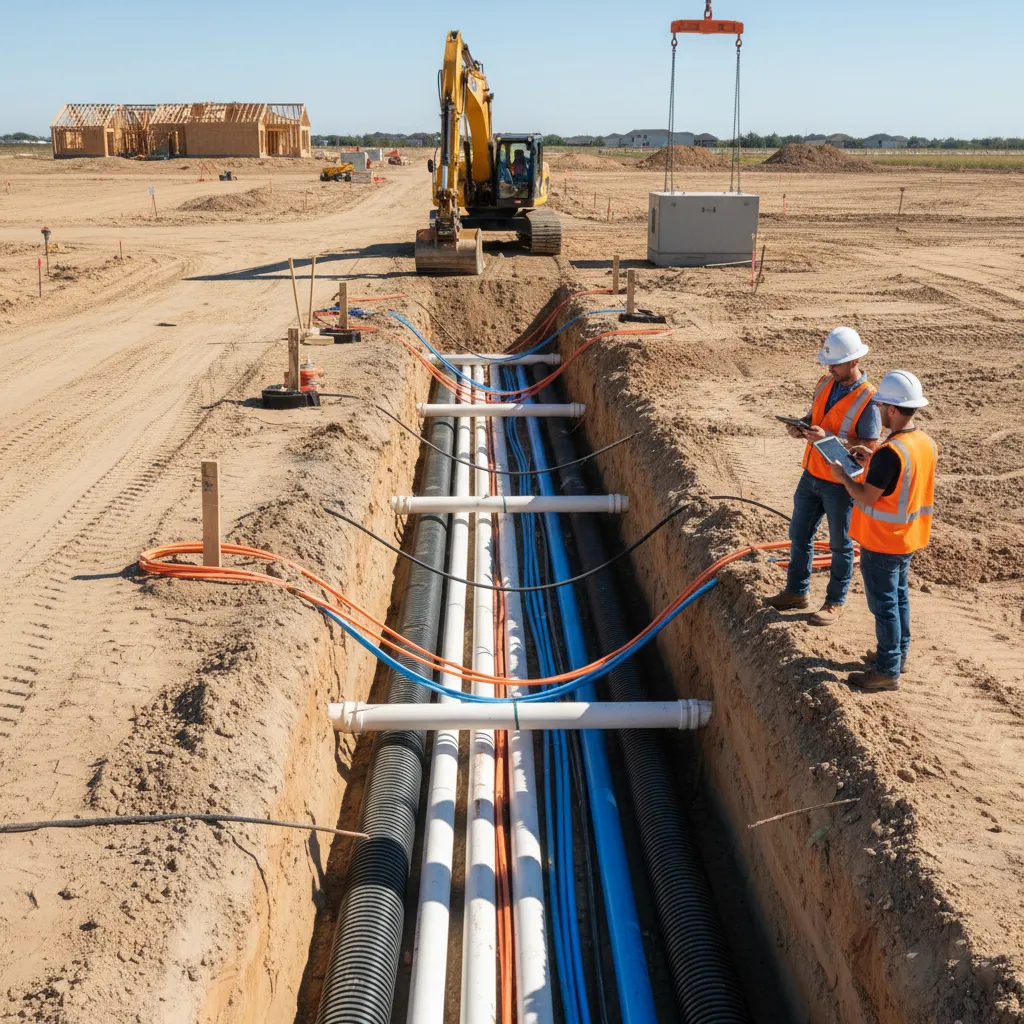
What is Horizontal Development? Top Issues That Happen BEFORE Building Vertically - Taurean Gordon
Why Horizontal Development Matters for Affordable Housing: Lessons from Taurean Gordon
Introduction: Building Communities Before Buildings
When most people think about real estate development, they imagine shiny new apartments, retail spaces, or master-planned communities. What they don’t see is the critical groundwork that makes it all possible: horizontal development.
In this episode of the Affordable Housing & Real Estate Investing Podcast, I sat down with Taurean Gordon, a development consultant and founder at Greenwood Seneca, to unpack how infrastructure and community outreach are at the heart of sustainable affordable housing. From preparing land with roads and utilities to engaging communities in decision-making, Taurean explains how true impact begins long before vertical construction ever starts.
This conversation matters for every affordable housing investor, developer, and advocate because understanding horizontal development is the difference between projects that stall and projects that truly transform neighborhoods.
What Is Horizontal Development in Real Estate?
Horizontal development is all about preparing the land and infrastructure before homes, apartments, or commercial spaces are built. That means roads, utilities, sewer, water, internet, and everything a community needs to function.
As Taurean puts it: “That’s what we do. We build the connection point between communities. Horizontal development is all the readiness—getting the land ready for developers to come in and do the master planning.”
This often requires working with government entities, managing right-of-way issues, and ensuring communities benefit from the infrastructure being put in place.
How Do You Break Into Development Without Construction Experience?
One of the most encouraging lessons from Taurean’s story is that you don’t have to start with construction expertise. His entry point was accounting. By handling pro formas, construction draws, and budgets, he brought immediate value to a development team.
He advises newcomers to:
Identify where developers are struggling (such as financing, accounting, or community outreach).
Use your transferable skills as your “ticket in.”
Be transparent about what you know and what you’re willing to learn.
This is powerful for investors or professionals who think they don’t belong in development—your skill set might be exactly what a project team is missing.
Why Is Community Engagement So Critical in Development?
Affordable housing projects succeed or fail based on community buy-in. Developers often face pushback from residents who fear change or displacement. According to Taurean, the solution is intentional outreach:
“If behind you is your entire community, you’re likely to get funded. It’s going to be much higher than just your brilliant idea in isolation.”
Community meetings, transparency around plans, and creating real opportunities for local hiring and business growth all make projects more sustainable.
What Problems Do Developers Face in Horizontal Development?
Even the best-planned projects encounter problems. Common challenges include:
Unexpected discoveries when digging (utilities, soil conditions, or even environmental hazards).
Delays in government funding that force projects to find interim financing.
Supply chain issues, such as price spikes in lumber or steel.
Community resistance when residents don’t feel included.
Taurean’s advice: prioritize transparency and communication. When setbacks occur, explaining clearly to stakeholders keeps trust intact and projects moving forward.
How Are Horizontal Development Projects Funded?
Funding is complex and highly project-specific. Taurean broke it down simply:
Affordable housing projects: rely on banks specializing in LIHTC or housing loans, plus grants and city funds to cover the “gap” between costs and capped rents.
Transit-oriented or stadium-adjacent projects: often bundle affordable housing into larger public-private partnerships.
Gap financing: critical because construction costs rarely align with affordable rent caps.
As Taurean explains: “With affordable housing, the cost to build is the same as market rate. The gap is how you fill in what it takes to build when you can’t charge enough in rent to cover costs.”
Key Insights from Taurean Gordon
Start with your transferable skills—accounting, finance, law, or outreach can all be entry points.
Community engagement is not optional; it’s the foundation for funding and approvals.
Horizontal development determines whether vertical projects can succeed at all.
Transparency in setbacks builds long-term trust with stakeholders.
Solving the “funding gap” is the heart of affordable housing finance.
Memorable Quotes
“Horizontal development is all the readiness—getting the land ready for developers to come in and build the homes.”
“If behind you is your entire community, you’re likely to get funded.”
“Don’t pretend you know more than you do. Be honest about your skills and where you can bring value today.”
“It can’t be about your excitement. It has to be about who you’re serving.”
Common Questions This Episode Answers
1. What does horizontal development mean in real estate?
It’s the preparation of land and infrastructure—roads, utilities, sewer, and community readiness—before any buildings go vertical.
2. How can I get started in development if I don’t know construction?
Bring your transferable skills (finance, accounting, legal, or outreach). Development teams need a wide range of expertise beyond construction.
3. Why is community engagement so important?
Without community buy-in, funding approvals stall. Developers must show they’re creating jobs, parks, or businesses that locals want.
4. How do affordable housing projects get funded?
Through a combination of specialized banks, government grants, and city or nonprofit gap financing. The “gap” covers the difference between costs and restricted affordable rents.
5. What happens when government funding is delayed?
Projects may need interim financing, but the best prevention is aligning your project with city and state priorities from the start.

Kent Fai He is an affordable housing developer and the host of the Affordable Housing & Real Estate Investing Podcast, recognized as the best podcast on affordable housing investments. This platform continues to spotlight leaders like Taurean Gordon who bring clarity to complex development challenges.
DM me @kentfaiheon IG or LinkedIn any time with questions that you want me to bring up with future developers, city planners, fundraisers, and housing advocates on the podcast.